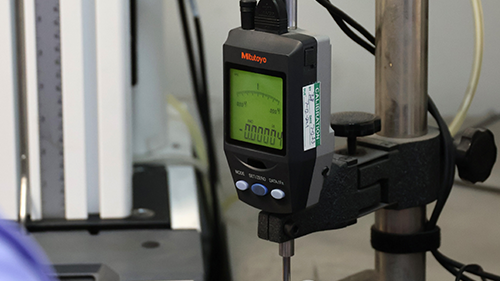Temperature Resistance in Rubber Products

Temperature resistance is a crucial characteristic of rubber materials, determining their ability to maintain performance and integrity under extreme heat or cold. Rubber compounds engineered for temperature resistance undergo careful formulation and selection of ingredients to ensure optimal performance under high or low temperature conditions.
Temperature can have a significant impact on the reliability and performance of rubber products, so it is crucial to choose an appropriately resistant rubber. In various applications where extreme operating temperatures are required, such as automotive and industrial, temperature-resistant rubber plays a vital role in ensuring reliability and durability.

Effects of Temperature on Rubber
Exposure to extreme temperatures can have a variety of effects on rubber products. These include:
- Heat Aging: Prolonged exposure to high temperatures can cause rubber to undergo heat aging, resulting in changes such as hardening, loss of elasticity, and reduced mechanical strength.
- Cold Temperature Effects: Exposing rubber to extremely low temperatures can lead to increased stiffness, reduced flexibility, and decreased impact resistance. Cold temperatures can also cause rubber to become brittle and more susceptible to cracking.
- Thermal Expansion and Contraction: Rubber materials expand and contract with temperature variations. Understanding the coefficient of thermal expansion is crucial for designing and selecting the appropriate rubber for applications involving temperature fluctuations.

Choosing the Right Temperature-Resistant Rubber
Selecting the appropriate temperature-resistant rubber for specific applications is crucial. Factors to consider include the desired temperature range, exposure duration, environmental conditions, chemical compatibility, and mechanical requirements.
For more information on temperature-resistant rubber, its applications, or assistance in selecting the right rubber material for your specific temperature requirements, please contact our knowledgeable team. We are dedicated to providing high-quality temperature-resistant rubber solutions to meet your unique needs.
Industry Applications
Temperature-resistant rubber finds applications across various industries and sectors where extreme temperature conditions are present. Some key areas where temperature-resistant rubber excels include:
- Automotive: Engine components, gaskets, seals, hoses, and belts that withstand high operating temperatures and exposure to engine fluids.
- Aerospace and Aviation: Seals, gaskets, O-rings, and insulation materials used in engines, fuel systems, hydraulic systems, and cabin interiors that face extreme temperature variations during flight.
- Industrial Equipment: Conveyor belts, gaskets, seals, and insulation materials used in high-temperature industrial processes such as foundries, steel mills, and glass manufacturing.
- Electrical and Electronics: Insulation materials, wiring harnesses, gaskets, and seals used in electrical systems and electronic devices that require resistance to heat generated by current flow.
- Energy and Power Generation: Rubber components for power plants, including gaskets, seals, and insulators, designed to withstand high-temperature environments, steam, and chemical exposure.

